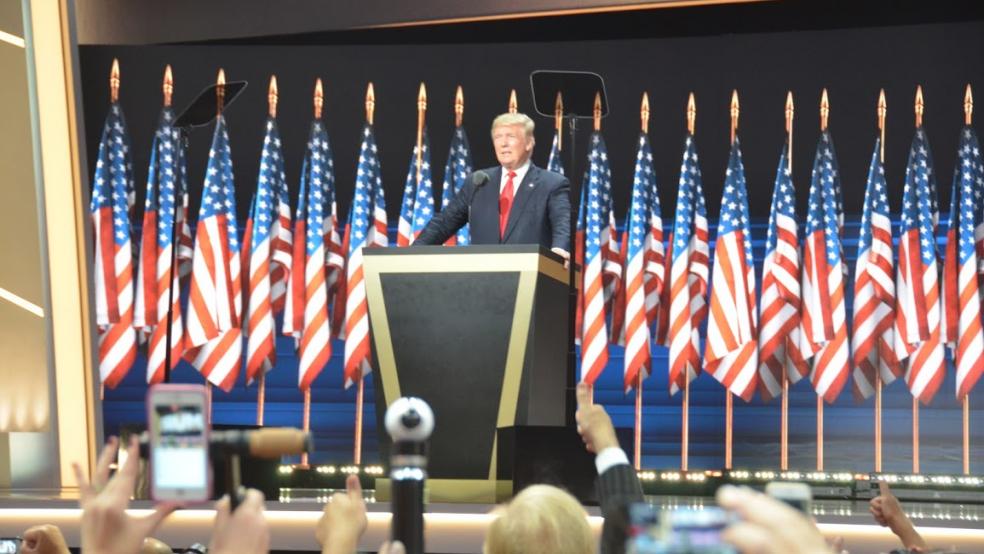It turns out that Donald Trump and the Republican National Committee made history when the party held its convention in Cleveland last month by achieving what neither major party has done before. However, it’s not really the kind of history you want to be making.
The Gallup company has been asking the same questions about political conventions going back to 1984, and one of the ironclad certainties, up to now, is that they produce at least a temporary positive change to the electorate’s opinion of the party’s presidential candidate. It’s hard to see how they wouldn’t -- the conventions are four-day affairs wholly controlled by the party committees, and are choreographed to put the best possible face on the presidential candidate and the party as a whole.
Related: Trump Shatters Presidential Norms in Attack on Grieving Parents
Over the years, Gallup has asked voters whether or not, following each major party convention, they were more or less likely to vote for a party’s candidate after the convention. And while the responses have been highly divergent -- Bill Clinton got a net boost of 45 percent in 1992 while Mitt Romney got only 2 percent in 2012 -- the number has always been positive, until now.
When asked about voting for Trump in the days following the Republican convention, 36 percent of voters said they were more likely to support him, while 51 percent said they were less likely -- that’s a net negative of 15 percent, the worst post-convention showing Gallup has ever recorded.
As has been the case with much in this election cycle, Trump’s extraordinarily bad post-convention numbers serve to overshadow numbers that, for the Hillary Clinton campaign, weren’t exactly stellar, either.
Clinton received only a modest net bump of 4 percent in voters who said they were more likely to support her after the convention, but the percentage who said the convention made them less likely to support her, at 41, was the highest on record.
Related: Trump Melts Down Spectacularly in ABC Interview

Gallup also gauges the effect the conventions have on the public perception of the parties in general. Again, the Democrats’ meager 2 percent net positive change would look pretty shabby if it weren’t presented alongside the Republicans’ net negative of 17 percent.
Combined with rising approval ratings for both Clinton and President Barack Obama, Gallup’s Jeffrey M. Jones concluded, even with their own lackluster numbers, things are looking up for the Democrats right now.
“In the weeks ahead, both Clinton's favorable rating and Obama's approval rating could fall back somewhat as the campaign moves further away from the Democratic convention,” he wrote. “But as of now, these key election indicators suggest the Democrats are in a stronger electoral position than the Republicans, and Trump and the GOP have a little more than three months left to try to change that.”





